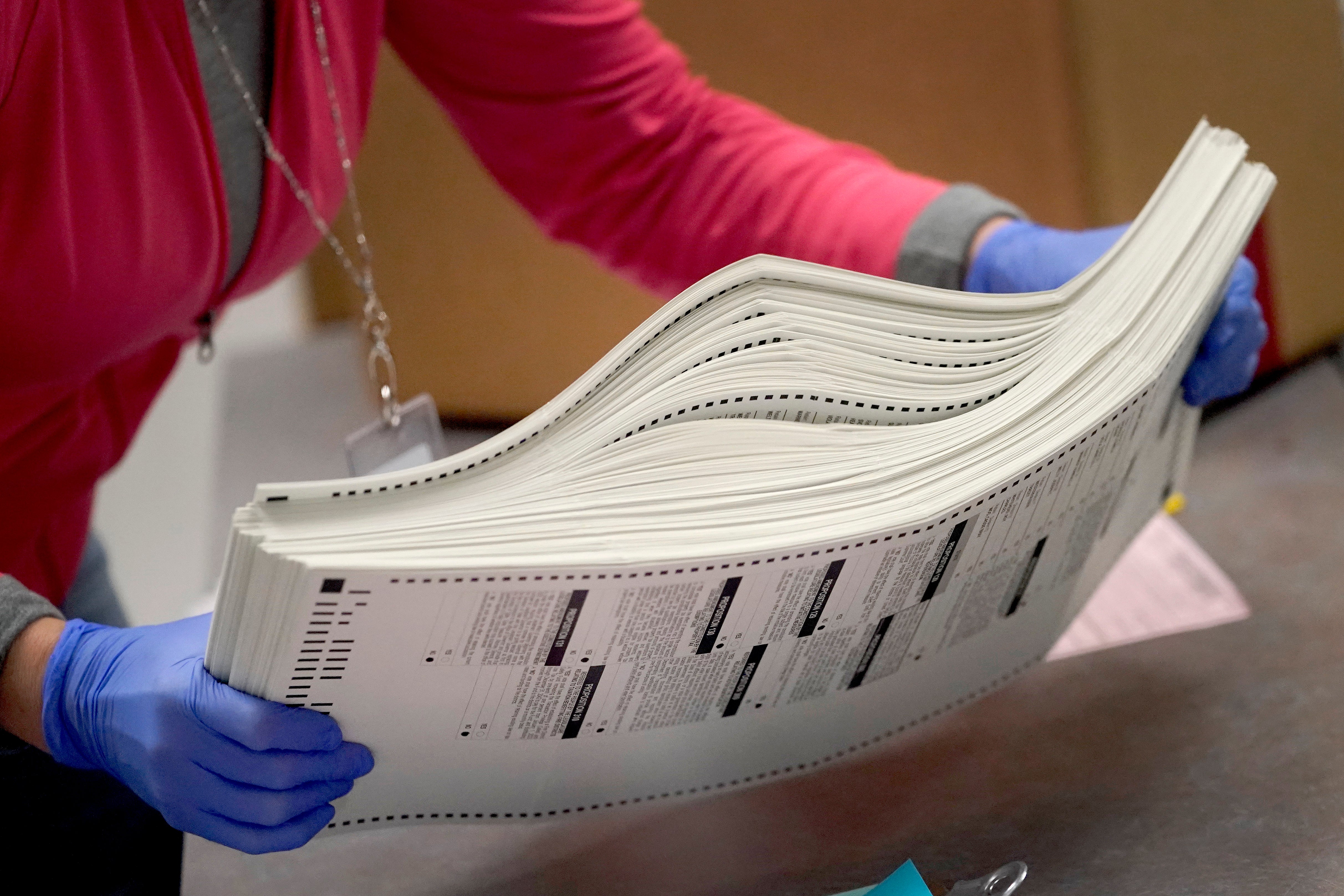Paper changes caused Maricopa County printer failure: report
A former Arizona Supreme Court justice says changes to the paper caused an issue with ballot printers that led to long lines at some Phoenix-area polling places last year

Your support helps us to tell the story
From reproductive rights to climate change to Big Tech, The Independent is on the ground when the story is developing. Whether it's investigating the financials of Elon Musk's pro-Trump PAC or producing our latest documentary, 'The A Word', which shines a light on the American women fighting for reproductive rights, we know how important it is to parse out the facts from the messaging.
At such a critical moment in US history, we need reporters on the ground. Your donation allows us to keep sending journalists to speak to both sides of the story.
The Independent is trusted by Americans across the entire political spectrum. And unlike many other quality news outlets, we choose not to lock Americans out of our reporting and analysis with paywalls. We believe quality journalism should be available to everyone, paid for by those who can afford it.
Your support makes all the difference.Problems with ballot printers that caused lines to back up at some Phoenix-area polling places last year were not caused by malicious actions but by changes to the paper, a retired Arizona Supreme Court justice concluded in a report released Monday.
County officials used longer ballots on thicker paper than had been used previously, changes that were made in part to respond to unfounded conspiracy theories but which pushed the printers to the edge of their capabilities, former Justice Ruth McGregor wrote.
She added that preelection testing may not have caught the problem because the test didn't properly mimic the stresses that printers experience on Election Day.
“Nothing we learned in our interviews or document reviews gave any clear indication that the problems should have been anticipated,” McGregor wrote.
McGregor’s findings show the challenges confronting election officials as they respond to concerns spread by election deniers with changes that carry their own unforeseen consequences that raise further doubts among voters primed to be skeptical of election procedures.
Clint Hickman, the Republican chairman of the county board of supervisors, said the board will “make changes to best serve voters, starting with replacing some equipment.”
Republican Kari Lake, who lost the race for governor, along with the GOP candidates for attorney general and secretary of state have pointed to the printer issues as a reason for their losses. Lake's campaign Twitter account called the report a “farce."
McGregor's team printed and counted 9,100 ballots, concluding the issue could be traced to a part known as the fuser on Oki B432 printers, one of two models used at vote centers.
For some printers, the fuser failed to consistently maintain the proper temperature to bond toner to the paper, resulting in ballots that could not be read by precinct-based tabulators. On Election Day, thousands of ballots from problematic printers were counted on more sophisticated scanners at the county’s election headquarters in downtown Phoenix. Officials say all voters had a chance to cast a ballot and all legal ballots were counted.
McGregor, who was appointed to the state's high court by former Republican Gov. Jane Hull, said the problem was more pronounced because of two changes made for the 2022 general election.
The ballot length was increased from 19 inches to 20 to accommodate more than 70 contests. And the paper thickness was increased after some voters in 2020 complained that the Sharpie brand markers used in polling places caused ink to bleed from one side of the paper to the other. The issue does not affect the ballot count, but claims that it was evidence of fraud were widespread among supporters of former President Donald Trump, who narrowly lost in Arizona that year.
In McGregor's tests, thicker paper led to higher failure rates, and adding an extra inch to the ballot length further increased the problems.
McGregor suggested a number of potential fixes for future elections, such as ditching the Oki printers or more aggressively testing to find the ones with problems. She said thicker paper and precinct-based tabulators both increased rates of problems. About half of Arizona's counties count all their ballots at a central location.
“You can be sure our board will take any steps necessary to ensure in-person voters have the experience they deserve in 2024,” Jack Sellers, a Republican county supervisor, said in a statement.